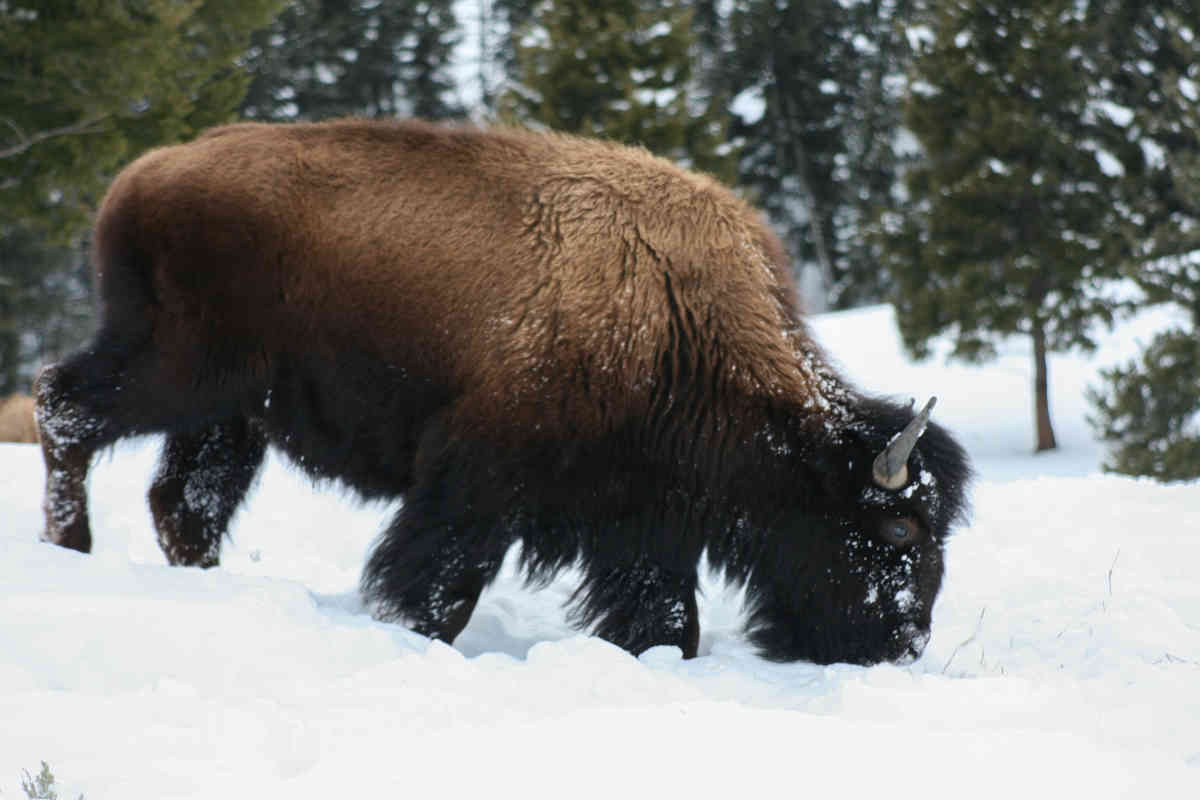
Bison Description
Bison are herbivores, grazing on the grasses and sedges of the North American prairies. Their daily schedule involves two-hour periods of grazing, resting, and cud chewing, and then moving to a new location to graze again. Bison bulls of that age may try to mate with cows, but if more mature bulls are present, they may not be able to compete until they reach five years of age. For the first two months of life, calves are lighter in color than mature bison. One very rare condition is the white buffalo, in which the calf turns entirely white. A bison has a shaggy, long, dark-brown winter coat, and a lighter-weight, lighter-brown summer coat. As is typical in ungulates, the male bison is slightly larger than the female and, in some cases, can be considerably heavier.
Plains bison are often in the smaller range of sizes, and wood bison in the larger range. Shoulder heights in the species can range from 152 to 186 cm (60 to 73 in). Mature bulls tend to be considerably larger than cows. The heaviest wild bull ever recorded weighed 1,270 kg (2,800 lb). When raised in captivity and farmed for meat, the bison can grow unnaturally heavy and the largest semi domestic bison weighed 1,724 kg (3,801 lb). The heads and forequarters are massive, and both sexes have short, curved horns that can grow up to 2 ft. (61 cm) long, which they use in fighting for status within the herd and for defense.
Bison are herbivores, grazing on the grasses and sedges of the North American prairies. Their daily schedule involves two-hour periods of grazing, resting, and cud chewing, and then moving to a new location to graze again. Bison bulls of that age may try to mate with cows, but if more mature bulls are present, they may not be able to compete until they reach five years of age. For the first two months of life, calves are lighter in color than mature bison. One very rare condition is the white buffalo, in which the calf turns entirely white.
Differences from European Bison
Although they are superficially similar, the American and European bison exhibit a number of physical and behavioral differences. Adult American bison are slightly heavier on average because of their less rangy build, and have shorter legs, which render them slightly shorter at the shoulder. American bison tend to graze more, and browse less than their European relatives, because their necks are set differently. Compared to the nose of the American bison, that of the European species is set farther forward than the forehead when the neck is in a neutral position. The body of the American bison is hairier, though its tail has less hair than that of the European bison. The horns of the European bison point forward through the plane of its face, making it more adept at fighting through the interlocking of horns in the same manner as domestic cattle, unlike the American bison which favors charging. American bison are more easily tamed than the European, and breed more readily with domestic cattle.